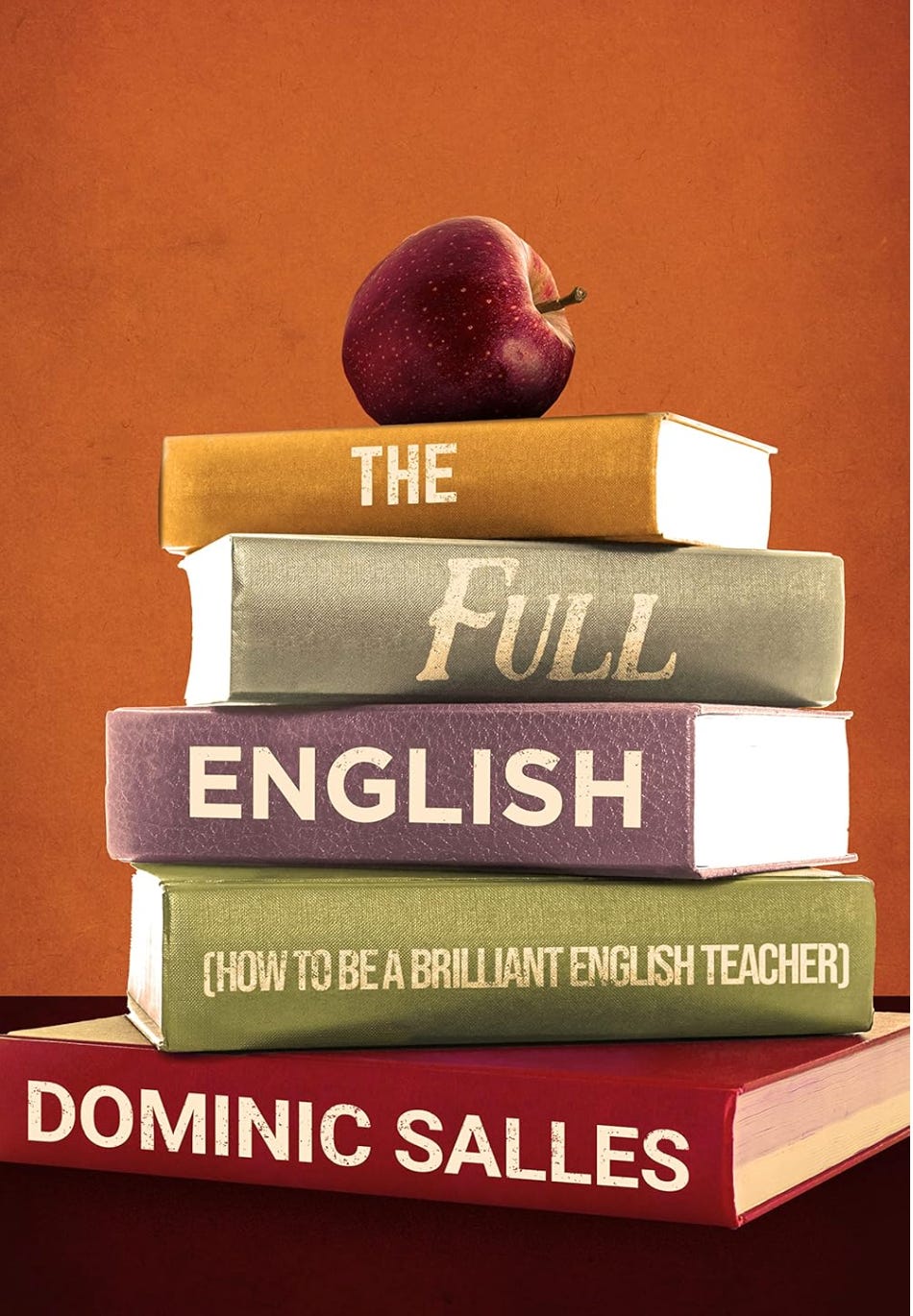The Great Teaching Toolkit - and one of my educational heroes, Professor Robert Coe, point out that the research into educational leadership is mostly bogus. He is a nuanced academic, so obviously he doesn’t use the word bogus.
“Unfortunately, when we look critically at this evidence, it seems much of the apparent clarity and confidence disappears.
School leaders are presented with plenty of advice, but much of it is not specific enough to be able to follow…
Where specific, feasible, appropriate actions can be identified, there seldom seems to be strong causal evidence of likely benefits—pretty much all the research in this area is correlational and descriptive …
Many of the widely used terms (for example, instructional leadership, culture, climate) have not yet reached the stage of having widely agreed, common definitions … let alone strong evidence of the validity of the common interpretations of standard instruments.
While theory is abundant, robust testing of the predictions that theory makes against independent empirical data seems a lot less common.
In short, it is far from clear whether any of this advice is either scientifically trustworthy or practically useful.”
Like I said, bogus.
But, the Great Teaching Toolkit does review the evidence and suggest best bets.
These are the Leadership Best Bets
Time
1. Can we increase the time students spend working when they are in school?
Student and Parental Beliefs and Habits
2. Can we increase the time students spend working at home?
3. Can we increase the amount of time parents spend supporting their child’s learning?
4. Can we increase their attendance?
5. Can we change the beliefs of parents about the value of education?
6. Can we change the beliefs of students about the value of education?
Curriculum and Teaching
7. Will teachers do this better if they collaborate?
8. Will this CPD lead to better progress for students?
9. How will this CPD be embedded in the curriculum or classroom?
10. Would we deliver this curriculum to our own child, or if there were no GCSEs?
11. How will these resources lead to better progress than other resources?
Management
12. How can we make this way of working more public and shared?
13. How will we measure this to see if it is working better?
14. What does the research suggest we might do to improve progress?
This is a checklist I like to give to school leaders when they are planning a change. Actually, I hate nuance, and just say this: what impact will it have on progress - put a number on it - how many extra grades, or tenths of a grade do we expect students to achieve when we implement X.
But, no one likes to think in numbers. We want nuance. And then, we, they, the school leaders struggle.
So let’s try a case study.
You have decided to centralise the curriculum. By this I mean that each department is going to create its units in a sequence, with common resources and common activities. Each department is going to choose the level of variation from these that they will expect or permit from their teachers.
Ok, we are heads of English in this thought experiment. Let’s apply some nuance.
English Case Study
Time
1. Can we increase the time students spend working when they are in school?
Yes. We can:
Do our knowledge retrievals as a Do Now orally, so the class get asked many more questions and have to think hard and remember more. Because these questions are centralised, all students think harder.
We can make sure that there are a certain number of Silent Solos - independent pieces of writing that students have to do.
We can specify in the resources that teachers will use the visualiser at this point to display, at random, at least 1 student’s work to teach from.
We can specify the feedback we want students to have for each Silent Solo - e.g. the 2 or 3 most important misconceptions which are likely, and the 2 or 3 ways of showing how to overcome these.
We can specify that students have to improve their first attempt using the visualiser and misconception feedback, and we can specify that another random sample will display one of these, so students will hold themselves responsible to improve their work.
Student and Parental Beliefs and Habits
2. Can we increase the time students spend working at home?
Yes we can.
We can give students full exam answers, at the grade they are aiming for and two grades above. They can study these two model answers for homework. Then we can tell them they will do exactly the same task in class, under exam condition, and receive a grade.
We can give students knowledge retrieval quizzes and, each term, increase the number of questions they answer.
We can record their results and league table their scores to correlate this with scores, and improvement in scores.
3. Can we increase the amount of time parents spend supporting their child’s learning?
Yes. Let’s give parents a set number of tasks to do with their child - all connected to knowledge retrieval. Then ask parents to come to parents’ evening with a report on the effort of their child during these tasks.
Correlate this to the scores students are getting.
4. Can we increase their attendance?
Sure. Include an attendance column in our league table of homework and assessment scores and progress. Show the correlation between attendance and progress.
Continually do this.
Do it again at parents’ evening, so parents can see the impact of their choices.
5. Can we change the beliefs of parents about the value of education?
Yes. Tell parents the average progress and grade of students in our subject for each 5% increase in attendance.
6. Can we change the beliefs of students about the value of education?
All of the above!
There needs to be a department spreadsheet with inbuilt formulae that does this for all teachers, so there is no extra workload, there is simply the entering of a mark or score.
Curriculum and Teaching
7. Will teachers do this better if they collaborate?
Yes, putting two or three teachers together to write a scheme of work or unit will play to everyone’s strengths and experience, and train inexperienced teachers quickly.
This will result in better teaching, better resources, assessments and models of writing at good and excellent.
8. Will this CPD lead to better progress for students?
Yes. When students see what success looks like, and receive teaching on how this success is structured, planned and worded, it is far easier to achieve.
Better assessment will lead to better progress, because of the forgetting curve.
9. How will this CPD be embedded in the curriculum or classroom?
The CPD is the curriculum. Everyone teaches the curriculum, so every teacher improves.
If we review each unit after it is taught, at department meetings, we can instantly improve the unit for next year, and adapt these improvement for the writing of other units we are jointly writing as a team.
If we ask each teacher to take one unit per year group and experiment like crazy - or as much as they want - we can agree on assessments which will help us see if there are better approaches.
This will also make teachers embrace their own autonomy rather than feel they must blindly follow the existing unit. (It might also emphasise the value of following it if the experiments prove not to improve progress!)
10. Would we deliver this curriculum to our own child, or if there were no GCSEs?
Look at every Silent Solo and assessment task. Do we actually value it? If I told you you could only have it for your class if you paid me £5, would you pay it? If not, it is probably a bogus task.
11. How will these resources lead to better progress than other resources?
Well, let’s experiment, and agree on how we will measure it - agree the assessment.
Management
12. How can we make this way of working more public and shared?
Department meetings look at books, units, models and assessments. There is no admin - that is for email.
Everyone owns the progress of their classes - we zoom in on what is leading to success with each teacher, and we spread it.
Every department meeting is therefore a public sharing of good practice.
We have no lesson observations, but frequent learning walks whose main focus is in sharing this good practice by spotting it in action.
13. How will we measure this to see if it is working better?
Assessments. Make them meaningful and interesting. Share the results by class. Zoom in on what is working and why.
14. What does the research suggest we might do to improve progress?
Ignore Twitter. Zoom in Teach Like a Champion, the EEF Toolkit, Rosenshine’s Principles, Visible Learning, The Learning Scientists, the UCLA Learning and Forgetting Lab.
Has the Nuance Helped?
Yes, because each question is followed by concrete actions.
There is no intent - no waffle, no aspiration, no ‘when this is implemented we will see’ bogus planning. There are just actions.
This is what we will do, unit by unit, term by term.
The Full English
If you want to learn how to improve all aspects of your English curriculum, teaching, or that of your team, you should try my book:





